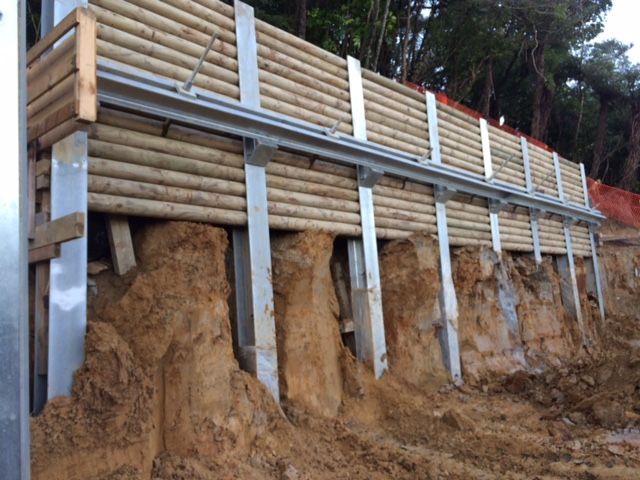Retaining walls sometimes called earth walls or retaining piles are a type of construction equipment used for resisting pressure to retain soil in a certain area. Retaining walls can be of different types depending on their purpose. Here we discuss different types of retaining walls and what they can be used for.
Earth retaining walls are large solid walls used mainly for retaining soil in a lateral direction so it can be retained in other directions. Usually these are arranged in pairs on either side of the soil gradient and constructed at right angles to each other. As a result, the soil pressure is directed across the wall rather than accumulating on one side. These are constructed to minimize the effect of dynamic shifts in soil pressure. They may be sloped towards the drainage system or to facilitate the movement of soil.
There are three main categories of these structures according to their use: open units, stack-unit, and frame retaining walls. In the open units, the material is not packed tightly. For example, the retaining wall used for constructing a retaining wall through the base of a hill is built in such a way that the slope of the hill does not cut through the material. Such open units are better suited for low-density slabs or loose soils.
Stack-unit and gravity retaining walls are built in the same way but with a gap between each pair of wall panels. This acts as a gravity retaining wall since the weight of the soil is resisted by the wall stack when it is extended horizontally. These are more suitable for heavier soils. Gravity retaining walls are designed to maintain soil density changes. For example, the amount of soil needed for building a retaining wall on the slopes requires a thicker wall than needed on flat soils.
Frame retaining walls are designed to retain soil erosion. The thickness and density of the panels of a frame wall are such that they effectively deflect the movement of soil and water. A-frame retaining wall is most suitable for retaining soil erosion on slopes. However, if you have a low-sloping lawn then this type of wall may not be the best option. If your soil is too thin for heavy bags, then this type of landscaping tool is most suited to your landscaping requirements.
Retaining walls need to be graded for both safety and aesthetics. For this purpose, you should make an assessment of your entire landscaping space using a tape measure, or if you are using software, by drawing an accurate map. Then you need to plot the grades of your retaining walls, as well as of the entire landscaping area. For aesthetic purposes, many designers use contrasting colors to accentuate the contrast between low-sloping areas and those which are higher.
It is important to decide what the purpose of your retaining walls will be. Are they needed purely to prevent erosion, or do you want them to provide protection from other elements? If you intend to include planting beds then you will need to include specific information in your plan. You should include: the amount and types of vegetation, you will use, the amount of water needed, and the width, depth, and length of the planting beds. This information should be clearly displayed on your map, and if necessary you should include additional explanatory text in your plans. Landscaping plans can be quite complex, and the more details you include the better your final project will look.
With the right materials, tools, and a carefully planned design, a new landscape structure can be designed to protect your home and/or yard. Of course, the most important thing is that your retaining walls provide the necessary stability for good soil erosion control. Landscape segments with the proper materials and a construction plan can give you the beautiful results you desire. The most beneficial aspect of having a professional landscape architect to help you design a properly aligned and constructed retaining wall system is that the end result will provide a safe, durable, and aesthetic addition to your home. Landscape segmental retaining wall systems can offer the perfect combination of aesthetics and safety to any home.

